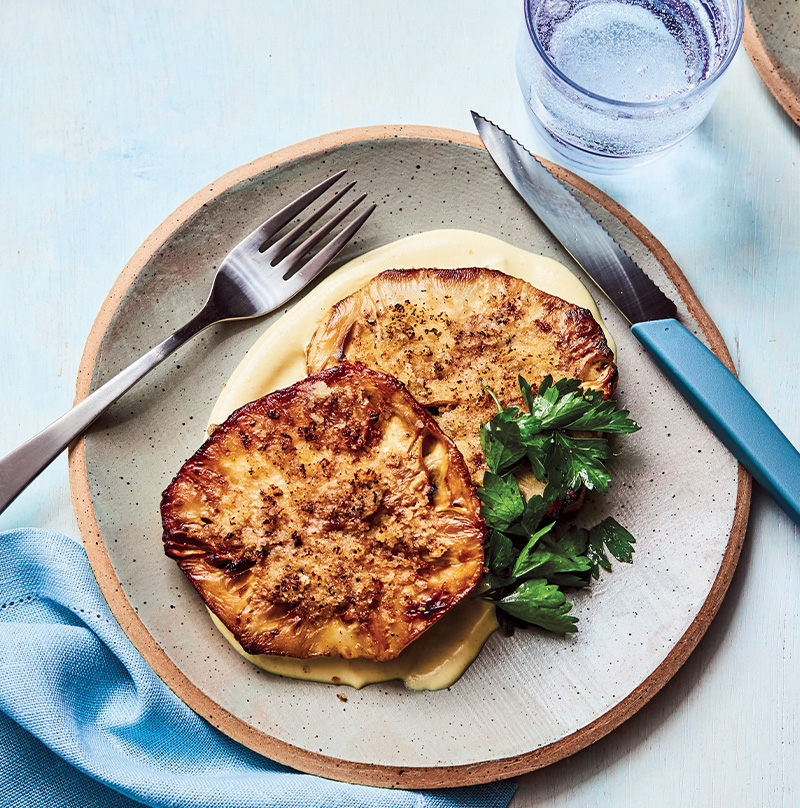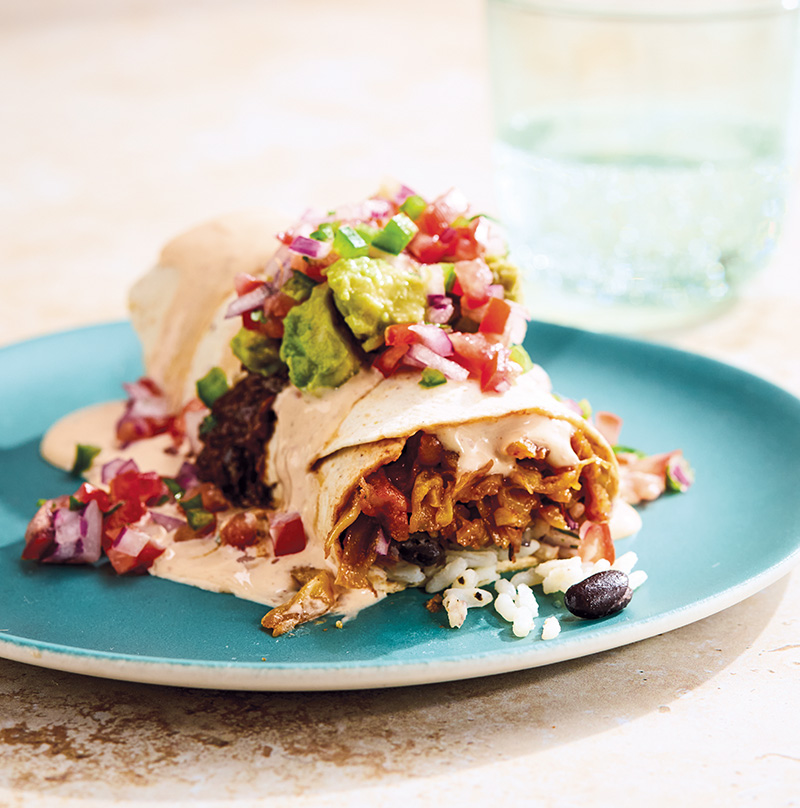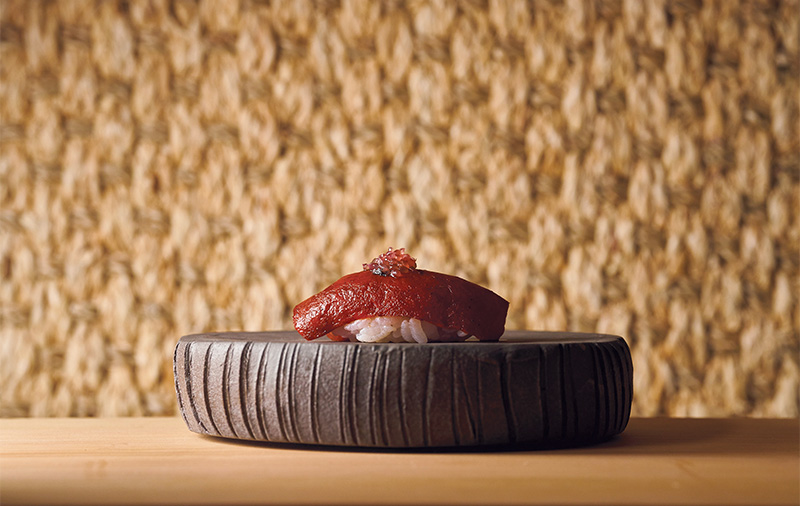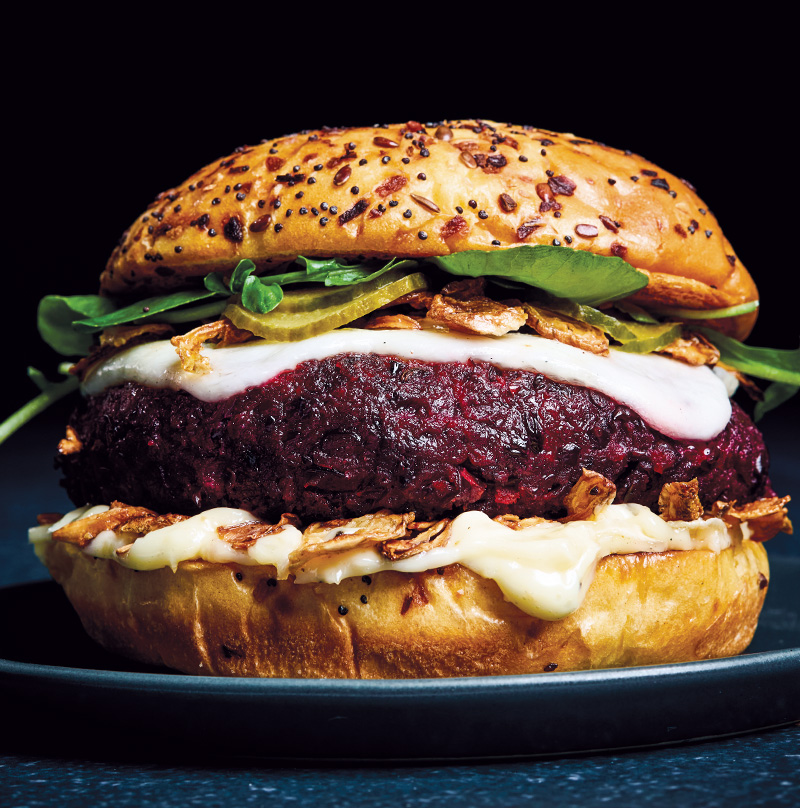6 Vegetarian Meat Substitutes to Dupe Popular Proteins
The spread of plant and cell-based protein alternatives shows no signs of slowing down, as they're impacting menus in an unexpected way. Chefs are getting more creative and leaning heavier into produce as center-of-the-plate dupes. Think dupes for steak, burgers, seafood, pork and even pasta for the carb-conscious.
Such interest is driven by a variety of factors, including the desire for less processed food. The target audience, however, is undeniable: flexitarians and social omnivores – consumers who go meatless, particularly when they dine out with others – but don't adhere to any strict eating habits. When it comes to dupes, chefs also know that it's all about taste; no one wants an alternative to meat if it doesn't taste good. And if there's a wow factor, expect a runaway success.
Taking a dupe to a meaty level relies heavily on heft, texture, umami and spices without masking flavor. However, the dupe can be a sponge like tofu. At State Bird Provisions in San Francisco, chef/owners Stuart Brioza and Nicole Krasinski swap in yuba sheets as a gluten-free substitute for pasta, which also offers the protein benefits of tofu. The possible variations are endless. At AbcV in New York City, Jean-Georges Vongerichten serves housemade silky tofu with yuba in a sour chili broth accompanied by peanuts and cilantro.
Steak Dupe:
Cauliflower Steak
Cauliflower steak has become as ubiquitous as formidable options when it's well-seasoned and grilled with a crispy char. But celeriac is moving in. The horseradish-crusted celeriac steak at Kindling in Chicago takes the approach to another level.

“I love slow-cooking this savory root vegetable on the rotisserie,” says Chef/partner Jonathan Sawyer. “All of the starches transform to sweet celery flavors, and it yields an amazing texture totally different from raw, or just roasted or smashed.”
Sawyer presents it as a hefty steak-sized 8-ounce disc with a zippy Parmesan panko horseradish crust and classic mustard sauce. In lieu of a rotisserie, Sawyer recommends roasting indirectly over a wood fire low and slow for two hours, or in the oven.
Pork Dupe: Jackfruit Carnitas
 Shredded jackfruit carnitas are a dead ringer for pork at Gracias Madre in West Hollywood, California, marinated with tomato, chipotle, smoked paprika and cumin. It's then stuffed into a sturdy wet burrito that's attracted the likes of Willow Smith and Woody Harrelson. Executive Chef Diana Briscoe marinades jackfruit just like pork, but rinses it thoroughly to remove acidity. “The flakiness and the tenderness of pork carnitas have the same mouthfeel as braised jackfruit, and they are both great sources of protein,” Briscoe says.
Shredded jackfruit carnitas are a dead ringer for pork at Gracias Madre in West Hollywood, California, marinated with tomato, chipotle, smoked paprika and cumin. It's then stuffed into a sturdy wet burrito that's attracted the likes of Willow Smith and Woody Harrelson. Executive Chef Diana Briscoe marinades jackfruit just like pork, but rinses it thoroughly to remove acidity. “The flakiness and the tenderness of pork carnitas have the same mouthfeel as braised jackfruit, and they are both great sources of protein,” Briscoe says.
Raw Meat Dupe:
Mushroom Tartare
At The Mary Lane in New York's West Village, executive chef Andrew Sutin serves a King Trumpet Mushroom tartare with truffle Dijon aioli and fingerling potato chips as a satisfyingly savory but lighter alternative to beef tartare.
“The mushroom replaces the beef, with the richness, body, earthiness and just the right texture that you expect from beef,” Sutin says.
He's experimented with carrots, radishes and turnips, but Royal King Trumpet mushrooms reign supreme when it comes to mimicking the raw meat texture. For the best texture, use firm, dense and slightly older mushrooms.
Burger Dupe: Black Bean Burgers
Grain-prominent burgers or protein-packed, soy-based and black bean burgers are still abundant, but chefs are zeroing in on vegetable-forward versions. Shake Shack spent two years perfecting its vegetable burger, specifically to eschew highly-processed, cell-based meat and wheat gluten. Launched this year at nearly 500 U.S. locations, the Veggie Shack has landed solid reviews of its mushroom, sweet potato, carrot, farro and quinoa patty topped with American cheese, fried onions, pickles and Shack Sauce.
At sports bar The Fifty/50, the Mother Earth burger features sautéed carrots, sweet potato and celery with black beans, brown rice and lentils for a thick 8-ounce patty that co-owner Scott Weiner says is one of the few items left unchanged from their original menu.
“The idea was not to make it taste like meat, but to have the texture of a burger with umami flavor,” he says. “We give it a heavy sear to create that caramelization on the exterior.”
Beets are the star ingredient in Chef/owner Halle VanNatta-Torkelsen's luscious magenta burger at Flourish Plant-Based Kitchen in Portland, Oregon.
“The roasted beets provide a tender and juicy texture, while the lentils and walnuts add a hearty and slightly chewy element,” she says of her burger that also includes beet skins to minimize food waste. “A subtle nuttiness from the walnuts creates a unique and savory flavor profile.” It's then topped with pickled cucumbers, housemade cashew mozzarella, fried shallots and chimichurri sauce. “Each bite is a messy yet satiating experience,” she says.
“Our aim is to create the grown-up version of our perfect burger with all the salty, fatty, hot and acidic elements we haphazardly stumbled upon when we were kids.”
Fried Chicken Dupe: Crispy Fried Cauliflower
Sometimes riffing off a sure thing can be the smartest route. Whole cauliflower is making its way into quick service by riding the coattails of the crispy chicken sandwich. In the test markets of Denver, and North and South Carolina, Chik-Fil-A rolled out its first non-chicken sandwich using a hunk of cauliflower prepped and presented the same way as its iconic crispy chicken sandwich. Dave's Hot Chicken in June followed suit, choosing six locations in Portland, Oregon, to try out crispy fried cauliflower as a sandwich and as cauliflower bites. Influencers on TikTok and other social media platforms lit up over both.
Seafood Dupe: Vegan Omakase
 MILA Omakase in Miami launched a Tuesday vegan omakase menu earlier this year with notable results: it consistently sells out. Nigiri riffs include roasted watermelon “ahi tuna” and eggplant “unagi” pieces brushed with teriyaki sauce that Chef Reiji Yoshizawa says some guests mistake for eel. “We sear the eggplant in vegan miso butter and finish with lime to balance the richness,” he says. VanNatta-Torkelsen also serves a shiitake “unagi” sushi burrito at Flourish that's wrapped in nori seaweed.
MILA Omakase in Miami launched a Tuesday vegan omakase menu earlier this year with notable results: it consistently sells out. Nigiri riffs include roasted watermelon “ahi tuna” and eggplant “unagi” pieces brushed with teriyaki sauce that Chef Reiji Yoshizawa says some guests mistake for eel. “We sear the eggplant in vegan miso butter and finish with lime to balance the richness,” he says. VanNatta-Torkelsen also serves a shiitake “unagi” sushi burrito at Flourish that's wrapped in nori seaweed.
A similar take on produce is the cornerstone of Miami-based Planta, which opened its first location in 2016. Each of the 11 restaurants in cities such as New York City, Chicago and Miami (with 10 more expected by year's end) features one of three approaches (Asian, Latin American or multi-cuisines), but they are all plant-forward, with hearts of palm as a dupe for ceviche that includes avocado, pineapple, leche de pina, cilantro and corn nuts. There's also “chick'n” fried mushrooms, bao sliders with hoisin and pickled cucumbers, and beetroot tuna as a dupe for the fish with pine nuts, capers, citrus soy, sesame, cilantro and taro chips at Planta Queen in Chicago. While the restaurants do not feature any animal products, most diners are flexitarians or those just interested in the experience.
“We're not trying to force activism or plant-based dining on any diner,” founder and CEO Steven Salm told Forbes. “We want to be a global leader in plant-based hospitality and have a basis of employees and suppliers that are committed to our ongoing success.”


